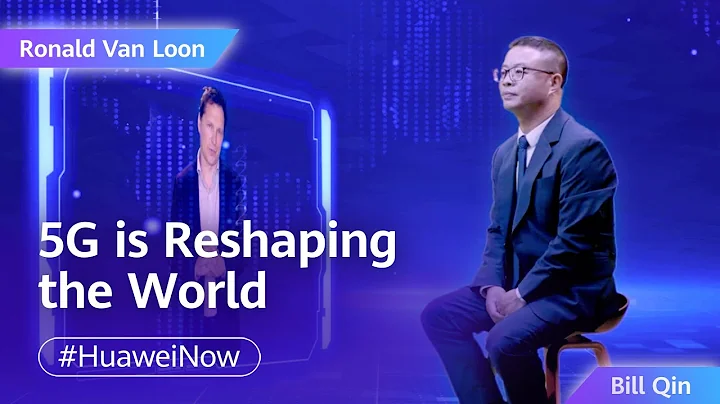Zhidixcom (public account: zhidxcom) Text | Yuyang
The "core-making movement" in 2018 has affected the nerves of every Chinese, and AI chips have also become popular in the industry; the number of smart speakers has increased to tens of millions, and voice interaction has spread even more Multiple smart devices; in addition, the IoT (Internet of Things) scene is ready to explode, and 5G is about to detonate the industry.
This has also brought the chip semiconductor industry to the forefront of the times and has become a key node in the industry's competition. Whoever can conquer AI, IoT and 5G first will have the opportunity to rewrite the pattern of the chip industry. The era is on the eve of change.
After nearly a year, this week Zhixixi once again had an in-depth communication with You Renjie, senior deputy general manager of MediaTek technology, and found that both the semiconductor industry and MediaTek itself are moving forward in drastic adjustments.
Just recently, MediaTek has quietly adjusted its organizational structure and expanded from two major business groups to three major business groups. The changes in the smart device business group that You Renjie is responsible for are even more obvious. He focused on the IoT business and divided it into three branches to cope with the new industry competition and opportunities of the times.

▲You Renjie, MediaTek’s senior deputy general manager and general manager of the smart device business group
Through MediaTek’s changes, we can see that to some extent its business adjustments also reflect the changes in the chip industry in the past year and the next year. .
Behind the changes in the chip industry, which is upstream of the industry chain, are often drastic changes in the entire AI industry and application scenarios. Through communication with You Renjie, we can more clearly see the new trends and new trends in terminal application scenarios this year. .
1. Changes in MediaTek, the IoT business is divided into three branches
In the past, MediaTek mainly had two business groups, one was the mobile business, mainly making mobile phone chips; and the other was the smart device business group that Yu Renjie was responsible for, including All businesses other than MediaTek’s mobile phone chips, such as tablets, wearables and other IoT businesses.

▲MediaTek’s latest business map
Starting from January 1, 2019, MediaTek will usher in its third business group-the smart home business group. After being approved by the Ministry of Commerce last year, MediaTek finally merged with TV chip manufacturer Morningstar Semiconductor (MStar) after a lapse of six years.
MediaTek merged Morningstar Semiconductor’s TV chip product line with its own TV chip department and established an independent smart home business group. Undoubtedly, this move represents MediaTek’s greater expectations for TV, the entrance to the home, in the context of AI, 5G and IoT.
However, MediaTek’s changes don’t stop there. The bigger change lies in the “big ship” carrying IoT business helmed by You Renjie.
In early 2018, during our communication with You Renjie, we found that the smart device business group mainly focuses on three businesses. The first is smart multimedia business, including smart speakers, home security, AR/VR, etc.; the second is smart connections. Including NB-IoT, WiFi, Bluetooth chips, etc.; the third block is the layout of customized chips and traditional TV chips.
This year, he has focused the growth of his business group on the "3A", which are ASIC (customized special chip), AIoT ( artificial intelligence and the Internet of Things), and Auto (car).

▲ MediaTek Smart Device Business Group’s latest adjustment
This change is profound both in terms of the order of business and the comparison of the business itself.
firstly integrates the top two businesses of 2018, intelligent multimedia and intelligent connection, into AIoT, integrates artificial intelligence and the Internet of Things into a whole, and lays out the development of this business from a higher dimension.
Secondly, Auto has been added as a focused business direction. At this year's CES, MediaTek also unveiled its chip brand Autus for the automotive industry, which mainly involves four fields: in-vehicle communication systems, smart cockpits, visual driving assistance (ADAS) and millimeter-wave radar. You Renjie said that automotive chips will also be officially launched on the market this year with mass-produced cars.
In addition, with the surging tide of 5G and AI, ASIC, or customized chips, has been repeatedly mentioned by You Renjie as a core focus. Click here for now.
As a chip company in the upstream of the industry chain, what drives MediaTek to adjust its organizational structure and change the focus of its major business groups?
What is clear is that on the one hand, new technologies represented by AI, IoT, and 5G are driving a new round of industrial revolution. On the other hand, application scenarios are undergoing drastic changes, and new demands are constantly emerging, causing the chip industry to also accelerate. Adjust your own pace and face the opportunities and challenges of the new era.
2. From the cloud to the terminal AI application brings three major opportunities
According to You Renjie, the trend of AI applications can be divided into two waves. The first wave is in the cloud, which has already happened. The second wave of AI applications will gradually move from the cloud to the cloud. terminal.
Specifically, the first step of AI application requires a large amount of data for learning and calculation, so the first wave of AI implementation revolves around the development of the cloud. Taking smart speakers as an example, their core far-field speech recognition and semantic understanding are all performed in the cloud.
But as the computing power of terminal AI becomes stronger and stronger, You Renjie said that the industry will then enter the "AI 2.0" stage, where AI is trained in the cloud and inferred on the terminal (edge computing).
can foresee that the trend of device-cloud collaboration will further emerge in 2019.
As for the chip design industry, You Renjie believes that AI will bring three possible opportunities to the industry:
The first and biggest opportunity is to create new platforms, such as smart speakers, which were cloud voice technologies 2 years ago. After relatively mature, the new platform created has a scale of nearly 60 million units worldwide last year.
The new functions brought by the second AI bring new selling points to the product. AI has created differentiated functions whether on mobile phone platforms, smart home platforms, or car platforms. For example, AI makes face recognition more accurate, and AI photography and smart beauty on mobile phones bring new experiences to users. .

The third is to improve the poor experience of traditional algorithm and . For example, traditional mobile phone cameras have problems such as jitter and light intensity when taking pictures. Through the application of AI algorithms, these problems can be effectively improved and the user experience enhanced.
starts from the time node of AI landing and the possibilities brought by AI. You Renjie circled the "3A" growth engine, which represents MediaTek's ambition for the future: using AIoT to decisively compete in the Internet of Things era, this business is also currently MediaTek's The advantages: using ASIC to satisfy the current industry's desire to "make cores" and giving new life to traditional businesses; using Auto to tear apart a corner of the automotive market and open up a new battlefield.
Looking at the semiconductor industry, companies that can span mobile phone, smart home, vehicle and other platforms are mainly Qualcomm, Intel, MediaTek, Huawei HiSilicon, etc. IoT is where MediaTek’s opportunities lie.
3. Will the smart speaker market exceed 100 million this year?
In AIoT, one of the three major growth engines, smart speakers are an unavoidable topic for both MediaTek and the market. Whether it is discussed as a home entrance or the strategic significance of AI implementation to consider.
You Renjie said that MediaTek currently holds about 60% of the voice assistant device market, ranking first in the world. In the past few years, smart speakers have grown exponentially every year. Last year, the number of smart speakers reached 60 million units globally. What changes will the market show this year?

You Renjie judged that smart speakers already have a high base and will still see double-digit growth this year. But the smart speakers themselves will also diverge, with low-end smart speakers (only having basic voice interaction functions and no screen), mid-end speakers with screens and high-end speakers with screens and cameras. And he believes that smart speakers with screens and cameras, although more expensive, can provide more services and give users a better experience. This will be an important driving force for the growth of speakers in the market.
He believes that compared with 2018, the market for smart speakers with screens will grow at least twice as much in 2019.
More importantly, in addition to smart speakers, voice interaction will be extended to different smart devices in the form of voice modules, and may have explosive growth in recent years.
"The era when voice becomes the new human-computer interaction interface is coming," You Renjie said with certainty.
"Will the market size of smart speakers exceed 100 million units in 2019?" Zhidongxi asked. You Renjie also responded happily: "There is no doubt about this growth trend. If the voice module is included, 100 million units will be a challenging goal."
The implication is that in addition to direct application of the chip, In addition to smart speakers, they will also be distributed in the market in the form of voice modules. Leaving aside smart speakers, the volume of voice chip is expected to reach 100 million in 2019.
In Zhidongzhi’s view, smart speakers have been questioned by “insufficient demand” during their rapid development in China. But now, after adding screens and cameras, or combining with other product forms, they may be able to meet some important needs. services to promote further growth of the smart speaker market. To take a step back, even if no rigidly needed applications have been explored, voice interaction is being extended to other devices, and voice is evolving into an interface for human-computer interaction. This is also a staged victory for smart speakers.
Specifically, mobile phones and wearable devices used at short distances, vehicle scenarios used at medium distances, and smart home devices used at long distances are all important scenarios for voice interaction, and these three scenarios will further develop in 2019.
4. Don’t emphasize whether the product is called an AI chip. It will take some time for VR/AR to explode.
In the IoT field, in response to the AI needs of terminal devices, You Renjie told Zhidongzhi at the end of 2017 that MediaTek adopts “light AI” and “light AI”. "heavy AI" strategy to meet the terminal device's demand for computing power .
Specifically, MediaTek's voice chips, mobile chips, etc. all have strong CPU and GPU modules. With good computing power and low power consumption, they can directly perform some simple AI functions. This part is called "light AI" ". If the terminal requires stronger AI functions, it will be equipped with an independent AI processor to meet the computing power requirements of the device. This is called "heavy AI".
This is the response strategy adopted by MediaTek when the demand for AI has not exploded in the early market.
With the explosion of AI demand, MediaTek no longer uses this strategy. Instead, it targets IoT scenarios and uses different product lines to provide different levels of chip computing power to meet customer needs.
When Zhixixi further asked whether it would launch AI chips in the IoT field this year, You Renjie said that MediaTek does not particularly emphasize whether a chip is called an AI chip because MediaTek has CPU, GPU, APU (AI processing unit) and artificial intelligence platform. NeuroPilot can match different computing power according to different application scenarios.

In addition, VR/AR, another scenario in the IoT field, has once again received intense attention as 5G commercialization approaches. You Renjie has also previously expressed his optimism about the prospects of this market. We also further communicated with him about the outbreak node of this market.
He said that generally a large-scale explosion of a device must meet three conditions: The first is price. Product price directly affects the market size. With breakthroughs in electronics, technology, assembly, etc., AR/VR devices will gradually fall within the reach of ordinary consumers. The "sweet spot" of acceptance; the second is infrastructure, such as the arrival of 5G, whose large bandwidth and low latency characteristics can bring a good user experience; the third is the ability to develop services that are valuable to people. When these three conditions mature, the market can explode rapidly.
Looking at the development of the industry in recent years and the investment of leading players, You Renjie is optimistic about this market. However, he believes that it will take some time for VR/AR to explode, and it is expected to have better development after 2021 and 2022. The biggest application of VR/AR devices this year is still in games, and the global scale of all-in-one VR machines may be in the millions.
The development of 5G+AI will gradually move from the cloud to mobile terminals, and through smart terminals, AI will be widely integrated into ordinary people's lives.
5. Internet giants build cores? No threat!
Since 2018, "core making" has not only been a hot topic pursued by AI companies and startups, but also an indispensable part of the layout of Internet giants.Domestically, Alibaba established Pingtouge Chip Company, Baidu unveiled its cloud AI chip Kunlun, and Huawei has launched several chips focusing on 5G and AI. Abroad, , Google , Amazon, Facebook, etc. have also launched self-developed chips or revealed research and development plans.

Internet giants are deploying chips one after another, so much so that many media have claimed that this will pose a threat to chip manufacturers such as Intel, Qualcomm, and MediaTek. But You Renjie made it clear that "the chip production by Internet giants has no impact on us" and "this is instead a service opportunity for MediaTek."
How do you say this? And why are Internet giants building cores one after another?
customized chips are a business that MediaTek has always had. In the past 20 years of chip research and development, MediaTek has accumulated profound experience in IP modules, process technology, packaging technology, etc., and can provide chip customization services to manufacturers in various industries in the ASIC model. This was originally a regular business.
However, with the arrival of AI and 5G, various industries may have needs for customized chips to build their own differentiation and competitiveness.
As for the core manufacturing itself, each manufacturer has different industries and different usage scenarios. They often know best what kind of design, hardware, software and algorithms they need. To put it simply, they are more clear about their own needs, which is why Internet giants are keen on making cores.
You Renjie pointed out that in the process of making cores for these players, they often need to use high-transmission computing interfaces, low-power technology, or advanced process experience. In the process of building mobile phone chips, MediaTek has accumulated a lot of experience in IP, advanced processes, chip design and packaging, etc., which can serve the industry's needs for customized chips.
This is why You Renjie regards ASIC (customized chip) as a major growth engine. He also said that MediaTek's ASIC business will grow several times this year.
Conclusion: MediaTek’s changes are also changes in the industry
Through this communication with You Renjie, we see that under the wave of AI, IoT, and 5G, MediaTek is actively seeking changes to seize new opportunities in the IoT scenario. As a typical player in the chip industry, MediaTek's changes and adjustments also represent a microcosm of the current chip industry. Through its changes, we can also better examine the new trends and changes in the industry in 2019.
Through the changes in the upstream part of the industry chain, we can infer that the application scenarios located in the downstream part of the industry chain will also undergo more drastic changes this year. Under the great wave of the
era, we look forward to the next wave of trendsetters.














![Dixin Couple - Is Real Part 1| Love You《爱你- Cyndi Wang(王心凌) [EngSub] | Dylan Wang Esther Yu♡ - DayDayNews](https://i.ytimg.com/vi/lUI4RodqnVU/hqdefault.jpg?sqp=-oaymwEcCOADEI4CSFXyq4qpAw4IARUAAIhCGAFwAcABBg==&rs=AOn4CLDOjXEY3m65HccpmCiFJvD84FVrCw)






